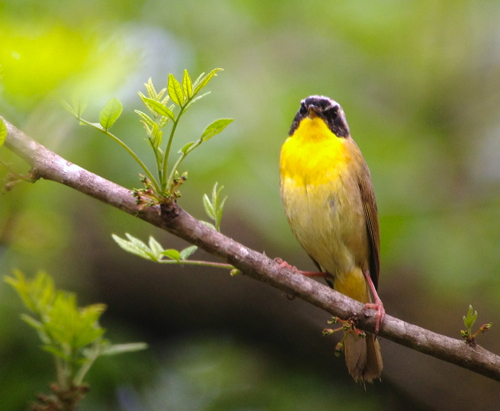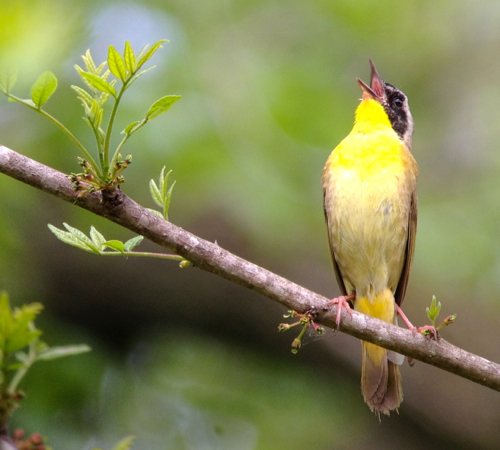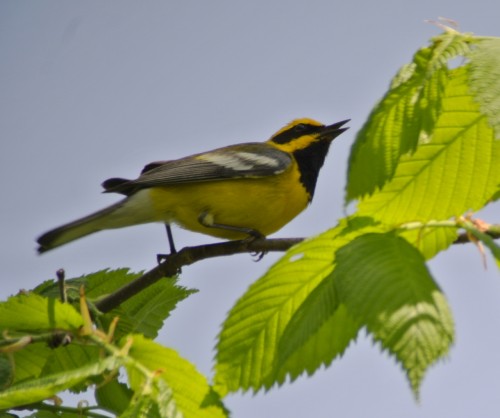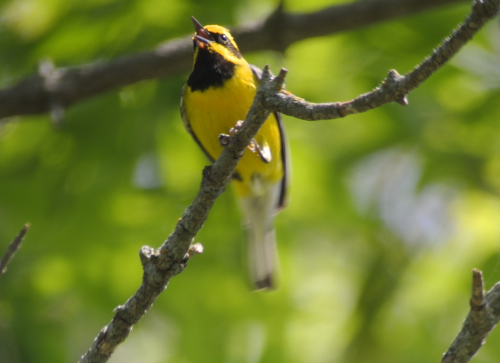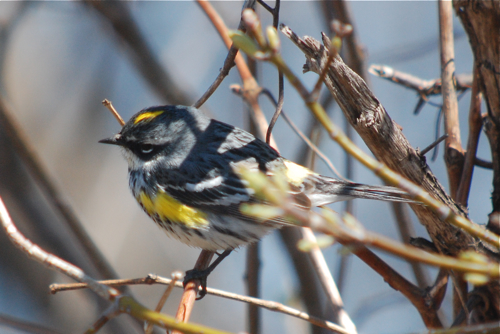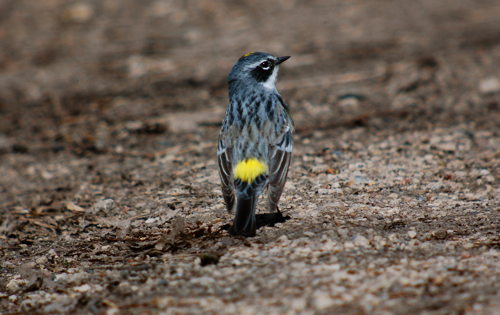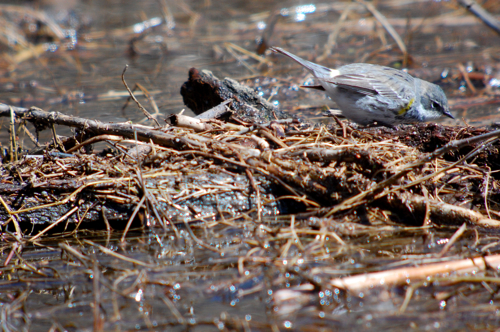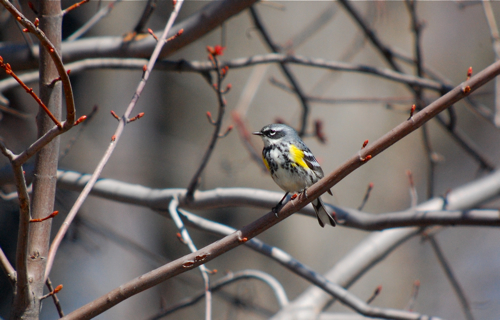With all my travel, I was worried I was going to miss one of my favorite parts of spring:
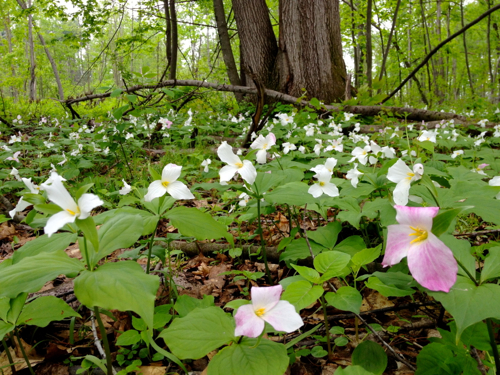
But thanks to the cold, wet spring, the wildflowers were late and I did have some quality time among some trillium at Mr. Neil's. I think I have missed the morel window but there's so much to pay attention to in early spring, that missing that edible fungus is negotiable in my mind.
While dealing with beehives yesterday, I couldn't help but mentally note all the birds singing and what warblers were still around. Some breed there like American redstart, common yellowthroat, pine warbler and ovenbird. Others are late movers like Tennessee warbler and blackburnian warbler. There have been blue-winged warblers that have nested there in the past. And then last year, I was surprised to find a Lawrence's warbler where the blue-wings have traditionally nested.
After checking the bees, I was debating about morel hunting or getting shots of birds for my Digiscoping Big Year. Heading down the hill into the woods towards the morel patch, I heard a blue-winged warbler call...only it wasn't a blue-winged warbler...it was the Lawrence's and it followed us around, making my attention towards morels shaky at best. I decided to plant myself down in the woods to get some photos. Of course, the Lawrence's disappeared, but like anything, if you sit quietly in one spot, if the bird you are after is on territory, it will return.
The nearby common yellowthroat was very cooperative and I got shots of it with both my Nikon V1 through my scope and with my iPhone 4s through my scope. I love the above--Disapproving Yellowthroat! That was taken with an iPhone 4s through the scope.
Since the bird was singing and out, I thought I'd experiment and get a video. As I was filming him, I heard the blue-winged warbler call again...
http://www.youtube.com/watch?v=_6dUl5bKZUE&feature=youtu.be
So above you can see and hear the Lawrence's warbler. I'm betting this is the same bird as last year. But without banding it, how can I be certain? I know Lawrence's is a hybrid of blue-winged and golden-winged warblers but can never remember the actual combo.
Here's the thing...there's a lot we don't know. Blue-winged warblers and golden-winged warblers will hybridize and produce what's called a Brewster's warbler. A Lawrence's is believed to be the result of a Brewster's backcrossing with a blue-winged warbler. Note that word, "believed?" There's still quite a bit we don't know, golden-wings could still be in the mix somewhere. Given what I know about the birds breeding around Mr. Neil's I think that is likely this bird is the result of the Brewster's and blue-winged warbler pairing. Last year, this bird was singing in the exact spot that the blue-winged warblers have nested and this habitat isn't the best for golden-winged warblers. I've only had one or two golden-wings during migration.
So, now I'm wondering...was there a Brewster's three or four years ago breeding with the blue-winged warbler and I missed it? The blue-wings have become such regulars and I don't like to disturb them where I know they nest. And I get distracted during bee season, I think it is highly likely that I could miss a Brewster's.
However this bird got here, I couldn't help but lay on the (most likely tick infested) ground and listen to this bird make it's rounds on territory while singing--how many crazy nature things went into it being where I was. Assuming it's the same bird as last year: It's survived migrating into South America at least twice. It is the result of its grandparents hybridizing and its hybrid parent backcrossing with a blue-winged (or possible golden-winged warbler). So much I can know about this bird and yet so much I don't.
I mentioned earlier that I wasn't sure I could count aplomado falcon on my Digiscoping Big Year because it's considered and introduced population and not sustainable on its own. But, it's a species and that bird wasn't banded so it could actually be a wild bird that flew up from Mexico. And this is about getting pictures of birds in the wild, so I counted it. But hybrids are not countable on the ABA list either. They aren't even included as a check in eBird. But I'm counting this bird. I'm not really following ABA guidelines and it was work to digiscope this bird, so Lawrence's warbler is 170 on my Digiscoping Big Year.
If you would like to read more about golden-winged warbler and blue-winged warbler hybrids here are some good articles here and here.

